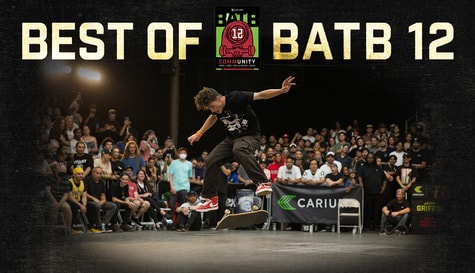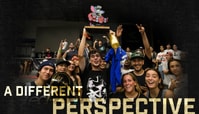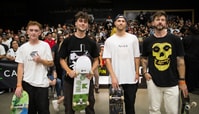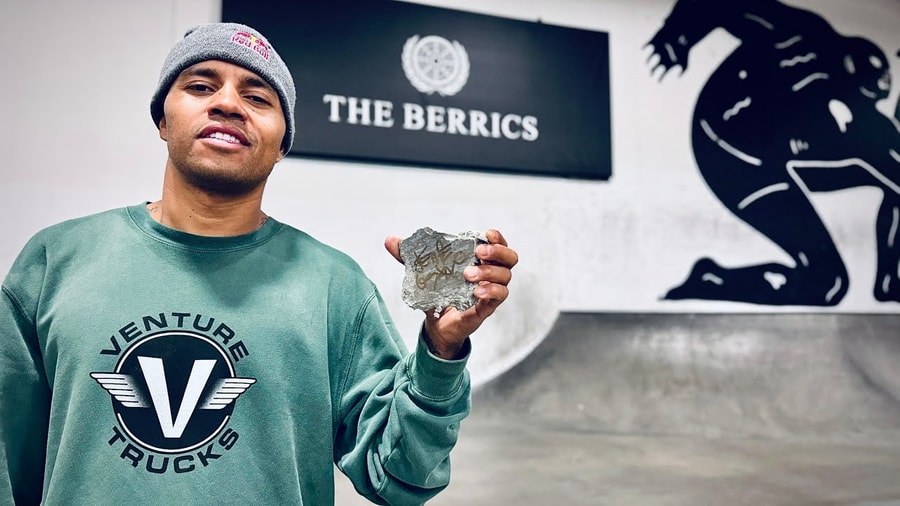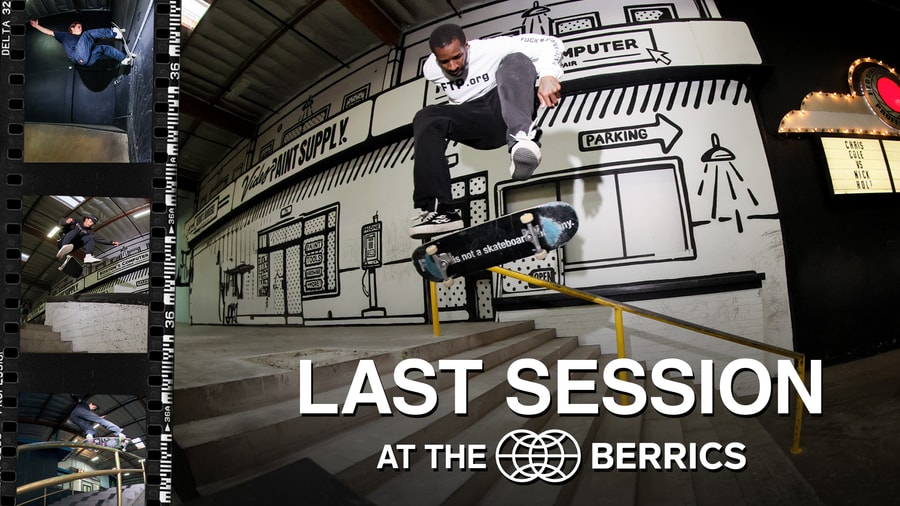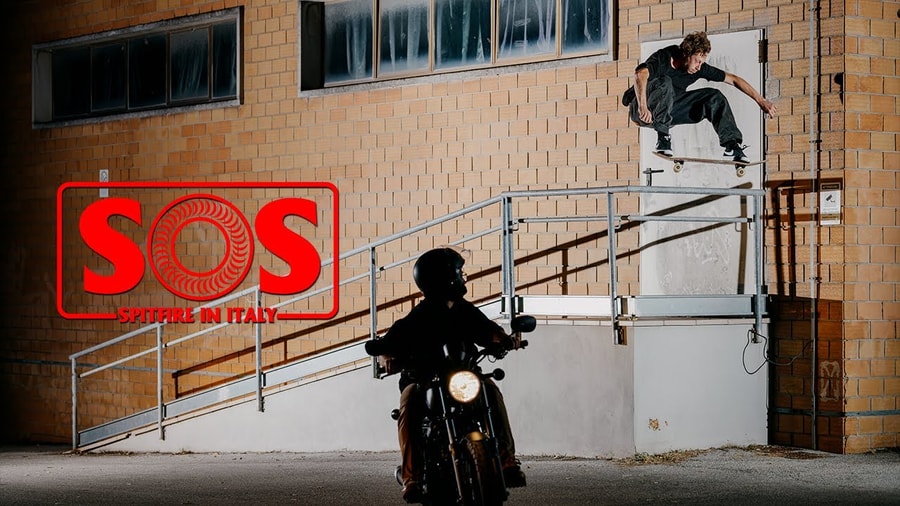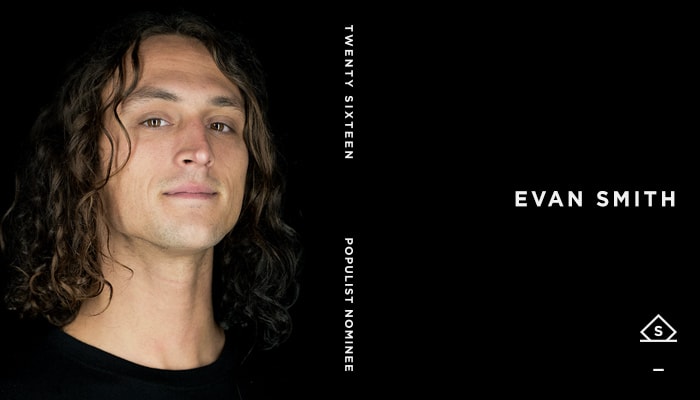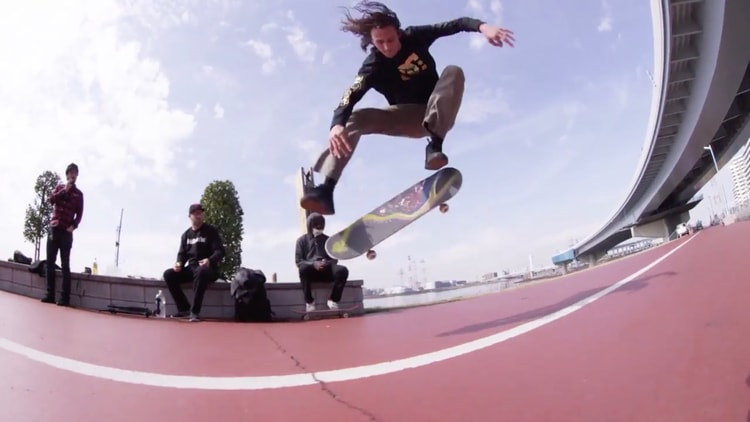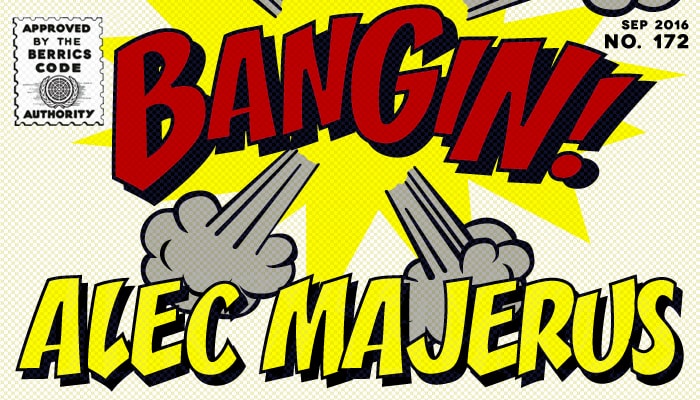PROJECT: SESSION — In Development

TEXT: STU GOMEZ
One of our main focuses of 2016 has been to encourage EA to produce a fourth installment of its “Skate” series. (Also known as our “Make EA Skate Again” campaign.) Will EA grace our consoles with a “Skate 4”? Word on the streets is… maybe.
Whether EA greenlights a new “Skate,” or whether the series is destined to be a trilogy, it’s reassuring to know that there are some promising contenders for the title of Next Great Skateboarding Game. Our “In Development” series highlights some of these forthcoming skating titles.
Longtime skateboarder Marc-andré Houde’s _creā-ture Studios _has its sights on a 2017 release for “Project: Session,” an open world sandbox game designed to replicate the feeling of an actual skate sesh. “Project: Session” (known more commonly as simply “Session”) made its presence known in June 2015 via a tantalizing teaser. “The teaser video was just a small test. We let it out in the wild, it landed on Reddit, and after a week or two it generated 100,000 views,” Houde says.
The response was instant and overwhelming. Think of it this way: You have millions of gamers. You have millions of skaters. And, in what is perhaps the greatest overlap of any Venn diagram, the community of gaming skaters (or “skating gamers”) is enormous. And we’re vocal, too. “When we first started the project in 2015 we were not expecting this reception from the community,” Houde says, “but the backlash was it put a lot of pressure on us.” Makes sense: when your goal is to produce the most realistic skateboarding sim ever, expectations will understandably be high.
Since the teaser’s release, “Session” has moved to the Unreal 4 engine enabling more realistic ground navigation, 100% skate physics (both trucks and all four wheels fully simulated), and an animation-driven ragdoll for those realistic bails. The teaser boldly stated a 2016 release date, but due to some changes in the development team, this target was pushed back a year. You can’t rush perfection, and after reading about some of the finer gameplay details, you’ll see that good things really do come to those who wait.
The “Session” teaser that made us all salivate.
How’s winter in Montreal?
It’s freezing, really freezing. I really do hate winter. Sometimes I snowboard because I cannot skateboard as often as I used to. So that keeps me busy, but I’m more of a summer guy.
I have two young kids so during wintertime , if I really want to skate, I need to plan this thing to go to an indoor skatepark, which is 45 minutes from my home. It’s a bit more complex! But during the summertime it’s cool—I built a miniramp behind the house so I can just go outside and have a small session. It’s way better.
When did you start skating?
When I was seven or eight years old. My first board was a Vision Lee Ralph model. I got it from my sister’s boyfriend, he was not into skating that much. I had a really crappy skateboard and when he gave it to me it was insane!
Was this in like ’90 or ’91?
Yeah, exactly, early ‘90s. I’m 35.
Did you start skating in Montreal?
No, actually I’m from a small town five hours north of Montreal. There wasn’t much there; there was maybe one or two spots. Everything else were funboxes and stuff that we built. I moved to Montreal when I was around twenty years old.
When did you first become interested in video games?
I was always curious about video games. I’d been drawing a lot, wanting to do animation—this is when 2-D animation was kind of dying slowly—so when I discovered 3-D animation I got really into games. When I started making games I was like fourteen or fifteen, but I started to work for bigger companies when I was 21.
That’s a pretty early start!
Yeah, the first move I made was to come to Montreal and really go skateboard a lot. I think I showed up in Montreal when I was eighteen, because in [the province of] Quebec, Montreal was the only good place to go skate. In my hometown there were no good spots. Skateparks back then were super crappy so you had to be extremely creative.
I moved to Montreal to be more into skateboarding, then I kinda realized that it has to stay a passion for me. I felt that it was getting more different: getting up, maybe not always into skating that day, but still forcing myself to do it. I think I was not good enough, either. So I said, Ah, maybe I should start thinking of a Plan B! [laughs] But I’ve always skateboarded and played music on the side.
I think most of us go through that at some point: “I’m gonna go Pro someday! Or maybe not .”
Yeah, I managed to get some local sponsors but nothing crazy. Then around the early-2000s when Flip’s “Sorry” came out and there was this new wave of crazy skateboarding coming up. Skateboarding was really different than when I was skating in the ‘90s. People were starting to do some flip-in-flip-out stuff. It was like, Okay this is a new game now. [laughs] I was trying to keep up but quickly I began to see people doing really insane stuff but I started to realize: I don’t think I’m going to be able to do that much!
I really like to set some personal goals and try to do stuff and I think this is the beauty of skateboarding. You don’t have to do the biggest things to enjoy skateboarding.
That’s true. There’s always that pressure to keep up, but during that period the progression just exploded! Were there any games that really influenced you early on?
In the ‘90s, we played a lot of “Skate Or Die.” That was like the only skateboard game—the Q-tip fight in the pool, skating to the shop—it was really kind of sketchy but still fun! I think that until the first “Tony Hawk Pro Skater” we were always starved for a good skate game. Every skate game was really funny back then, you would be jumping around like a mad person. There was this gorilla skate game…
“Town & Country”!
Yeah! As soon as you had something that was even close enough to skateboarding, it was a big thing!

When did you start to get the idea for “Project: Session”?
The story of “Session” is a hybrid of sad and funny. The idea wasn’t as clear as it is today, but the idea of making a skateboard game goes back a really long time, when I was starting to get into design. At the time I was really enjoying “Tony Hawk” but it was really arcade-y. I was really enjoying doing just a simple backside flip down twelve stairs and stuff like that, but the “Tony Hawk” game was not designed to do stuff like this—you were really overclearing the stairs—it wasn’t possible to do anything close to reality. I was really struggling to find something fun like this and I started to have a really well-shaped design, and then EA’s “Skate” came out. I saw it and I was pretty happy, because my design wasn’t as good as EA “Skate” was. They were doing something that managed to get the essence of skateboarding in a way that’s really difficult to achieve. But when you do it you’re so excited—you’re stoked and hyped about it! And this was definitely the first time in a game when you could have something so close to the real feeling.
How did the “Skate” release affect your plans for “Session”?
It kind of killed the concept. Like, “Oh fuck! I’m not going to be able to do anything better.” So I put the concept on the shelf for maybe three or four years. But the good thing about playing “Skate” is it helped me find the missing link of the concept I had, which was the controls. “Session” is inspired by the “Skate” controls. We’re not going to try to hide it, it really helps to make it feel real.
Four years later, the idea came back. I started to think that maybe it was a good time. This is why we put out a teaser in summer 2015.
And that teaser was actual gameplay, right?
Yeah, it was the actual gameplay at that time. But the gameplay’s changed a lot because the first concept of “Session” was really driven to skate videos. The first part of the game was like, “Okay, we’re going to make some cool lines have this camera following behind you, then you’ll be able to do the tricks.” Along the way we started to get in touch with the community and we quickly realized that as much as we were trying to leverage the creativity and freedom of skateboarding in our game, we kinda realized that we were killing it by forcing a player to be on a straight line.
From there we started to ditch everything and say, “Fuck it, let’s go back to square one.” Make it real and full. And it was good because when we’re designing the game I always had this feeling of not being able to make it grow. I wanted to get rid of this old mentality of game making: “Let’s make the first one quickly and let’s make the second one make more money. We just have to pile stuff on top of the first one and milk it until the cow is dry.” I wanted to make sure that we listened to people and create some virtual events. We killed some sections and we built some new stuff. But we’ll never make “Project: Session 2” or “Project: Session 3.” We’ll just make this “Project: Session” grow and live in the community as long as people are enjoying it.
Did going back to square one feel like there was a lot of time wasted, or was it just a learning experience for you and the team?
I wouldn’t say it was time wasted. But it was really difficult. We lost most of the team because they felt the project was getting too big or too ambitious. They were kinda scared, so they decided to go on a safer route; a lot of people were hired by Ubisoft.
That’s one of the realities in Montreal. It’s extremely difficult to keep a good team because other companies are around offering crazy salaries, perks, free coffee, food, candy… As soon as they face a wall or hit something difficult, they say, “I’d rather be well-paid and leave my job at 4:00 every day.”
But I think it was a good thing because it was not yet the game I was hoping to build. I want to create a new genre of game with no goals, something that you just launch when you want to: it’s raining; you twist your ankle and can’t skate; you just want to have a small session. No goals, nothing. This was the core thing that was missing from the concept. I think the first time we were working on “Project: Session” we were tackling it like a “proof of concept” rather than the game itself. It was really cool to hear from the community: “Hey guys, we don’t think you’re going in the right direction.”
That [feedback] was useful because it helped us to validate lots of things really early. In game development, something that you quickly learn is it’s all about the controls. And this is probably the most difficult thing to nail. It’s the biggest thing you’re going to work on, and the controls are the last things you’re gonna tweak before shipping the game. It helped us validate “Is two sticks too complex?”
From what I’ve seen, the controls do seem really revolutionary—one stick for each foot.
I might be biased because it’s my project, but when I take EA’s “Skate” and I play, I always try to play with the triggers and I always try to do the tricks with the two sticks. To me, it’s second nature—even more for skaters. You do a shuvit: right trigger and you just scoop. That’s it. It’s really fun! We were really happy when we gave it to skaters, because we did a couple of local play tests around town and the only thing we were telling the guys was, “Look, the left stick is your left foot and the right stick is your right foot. Just as you do on a skateboard.” Two or three minutes later, they were doing 360 flips and pretty much everything else they wanted.
What kind of feedback were you getting from the local play testing?
People got super excited! It was really fun. I’d say the biggest learning curve is definitely the triggers. We’re taking the gamer’s brain and we’re breaking it! You always use the left thumb stick to turn. But today? Fuck it: use the triggers. Banking. Put some weight on your skateboard, the same you would do in real life. Really quickly, they started to bank. It completely changed the way you play.
In “Skate” you were skating and you were in the city, getting lost. But the mentality of “Session” is more spot-based. It’s really like when you go session with some friends. You want to get some footage at a particular spot. So with “Session” we’re giving you the immediate control to hit that spot and nail your trick. You’re not going to navigate in a super crowded place. You’d just get off your board and go back up to the stairs and then jump back, going from one to another as seamlessly as you can, rather than just staying on the board and driving like a tank trying to get to a particular spot.

Is “Session” set in a certain period in skate history? Or is it “current day”?
I kinda feel like I’m stuck in the late ‘90s-early 2000s. Those were my best years! I was healthy, I was falling but I was getting back up. I didn’t have to recover for months because I did a faceplant down a four-foot ramp!
But I would say we want to keep up-to-date, at least for the bag of tricks and the way people skate today it would feel restrictive. Lots of things changed between the ‘80s and the ‘90s and even more after. I felt it skyrocket. I watch Street League while I work. I have it rolling on another screen…
For inspiration?
[laughs] Yeah, it’s pretty funny because I don’t watch that much but when I hear the crowd scream I play it back and watch the trick. These guys are doing some mad tricks! Everything evolved. So we’re keeping to a particular era: we want to have the “Golden Age” feel in the art direction but not that much in the tricks.
That’s probably the biggest, most avid generation of skaters who are still active. The “This Is Skateboarding”/”Sorry” generation. Is there a storyline in the game?
There’s no real story, but this is still something that we are super open to. A lot of players are asking. They would like to maybe live the life of an amateur skater going Pro, so this is a really interesting part. How we envision “Session” and the way the game is designed, this is definitely something that we can add on later.
I really like the Berrics concept: one hub to bring everything together, skaters and brands. It’s like that for “Session,” you have the core, you have the spots, you have the controls, but over this you have some virtual designs and you have some challenges. You have your friends, your crew. You can go shop. So a story can just be another layer on top of all these possibilities. The player is fully customizable so you’ll can make your own character and customize it as much as you want.
Is there an update to the projected release date?
We pushed the date for a year. We now have a really dedicated team, Most of us are ten years-plus in the game industry. Most of the people have worked for game studios like Ubisoft, EA, Warner Bros. We’re game developers, so finding money is always a big challenge. It kind of forced us to push the release date to 2017.
That’s sick! Which platforms?
We’re going to be on PS4, Xbox One, and PC. When we first started the project in 2015 we were not expecting this reception from the community! The teaser video was just a small test. We let it out in the wild, it landed on Reddit, and after a week or two it generated 100,000 views. We didn’t know how or why or anything, but the backlash was it put a lot of pressure on us. Since the progress wasn’t as good as the community would have wanted it created a lot of really funky moments. Now we’re trying to stay off the grid and as soon as we get something really solid and way better looking than we have now, we’re going to make it public.
But for now, creā-ture Studios Facebook and Twitter are the two best places to get updates. Lots of things will be happening in 2017!


